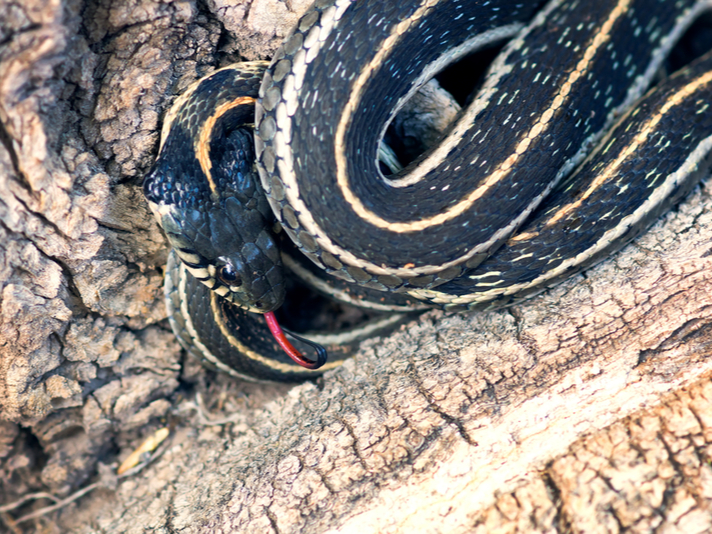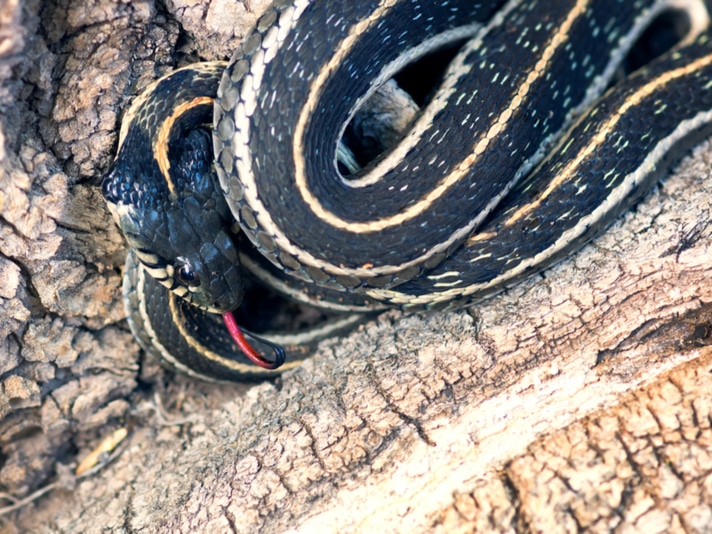The northern Mexican garter snake and the narrow-headed garter snake were give Endangered Species Act protections in 2014.
The northern Mexican garter snake (Thamnophis eques megalops) and the narrow-headed garter snake (Thamnophis rufipunctatus) were granted Endangered Species Act protections in 2014, after the Center for Biological Diversity sued the U.S. Fish and Wildlife Service in the 2000s. While the government gave the reptiles protections, critical habitat for the snakes was not protected, even though the USFWS proposed protecting more than 420,000 acres of critical habitat for the snakes in 2013. The protection for the habitat was never finalized.

irinak/shutterstock
The northern Mexican garter snake populations are found in low densities.
“We can’t save these unique, beautiful garter snakes without protecting the riverside habitats where they live,” Jenny Loda, a biologist with the Center For Biological Diversity said in a statement released to the media. “The Trump administration needs to act now to give these species a fighting chance at survival. Safeguarding the rivers these snakes depend on will also benefit people and other native wildlife that need healthy waterways.”
Two Garter Snake Species Get Endangered Species Act Protection
Long Thought Extirpated Northern Mexican Garter Snake Discovered In New Mexico
Both of these species are threatened by non native species as well as loss and degradation of the riverside habitats in which they reside, according to the Center. The snakes have experienced declines in their native habitats in the states of Arizona and New Mexico, as well as in Mexico.
“Studies show that species with critical habitat protections are twice as likely to be recovering as those without,” Loda said. “It’s time for the Trump administration to stop dragging its feet and comply with the Endangered Species Act by finalizing habitat protections for these threatened snakes.”
In 2014, according to the USFWS, 83 percent of the populations of the northern Mexican garter snake and 76 percent of the narrow-headed garter snake populations was at extreme low densities or are gone from their native habitats.
The narrow-headed garter snake is greenish brown, blue grey, or olive grey in coloration with brown, orange or black spots on its back. It grows to 34 inches in length and spends most of its time in bodies of water searching for prey items such as small trout and other fish. It is found in high elevation streams in northern and eastern Arizona and southwestern New Mexico.
The larger northern Mexican garter snake grows to 44 inches in length and can be found in 13 counties in Arizona and four counties in New Mexico. It is also found in 16 states in Mexico. Its coloration ranges from olive-brown to olive-gray and has three stripes that run down the length of its back. It is also found in and near bodies of water such as wetlands and riparian river systems and streams and in tall grassy areas. It feeds on amphibians, fish, and lizards.


